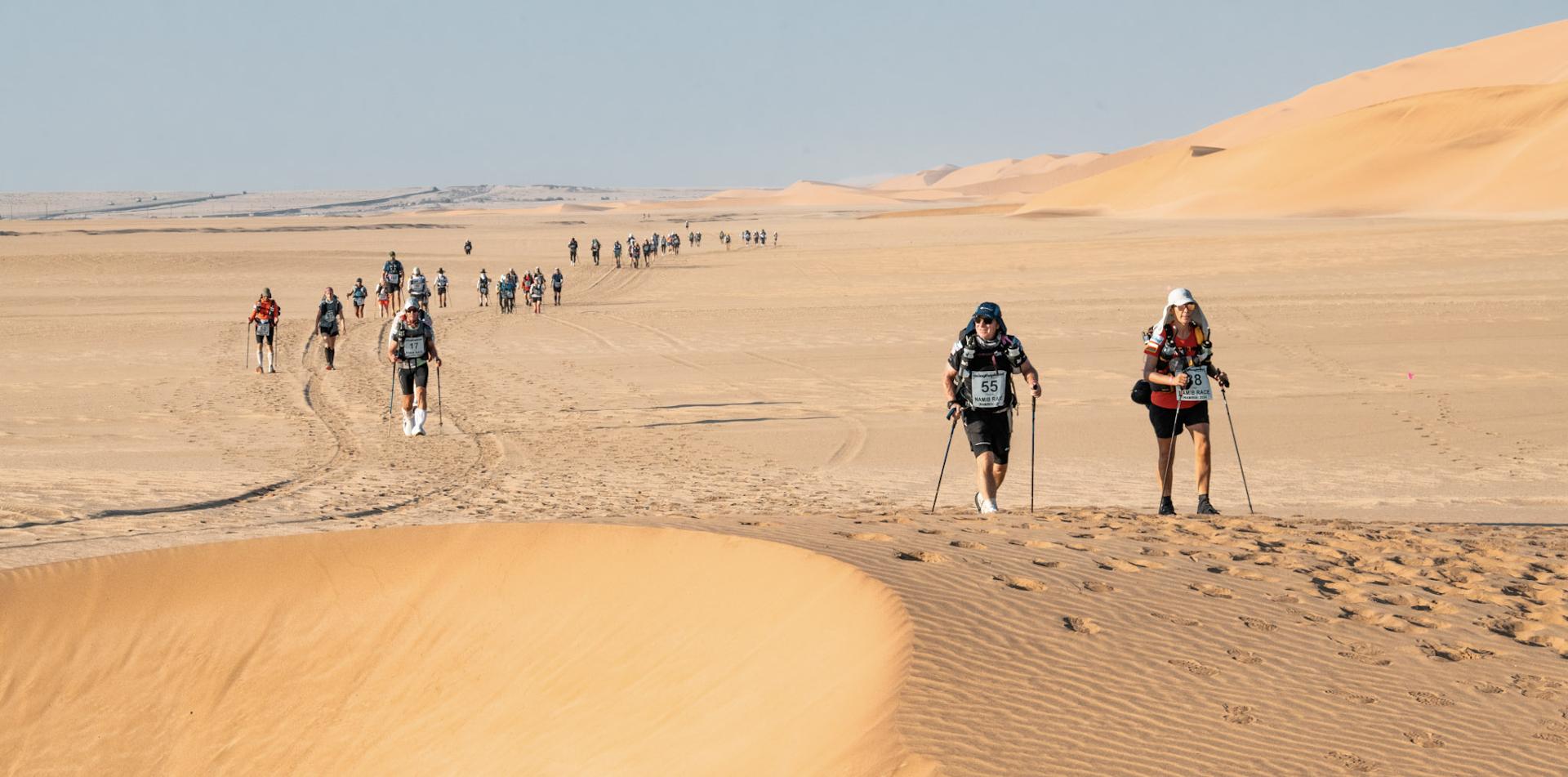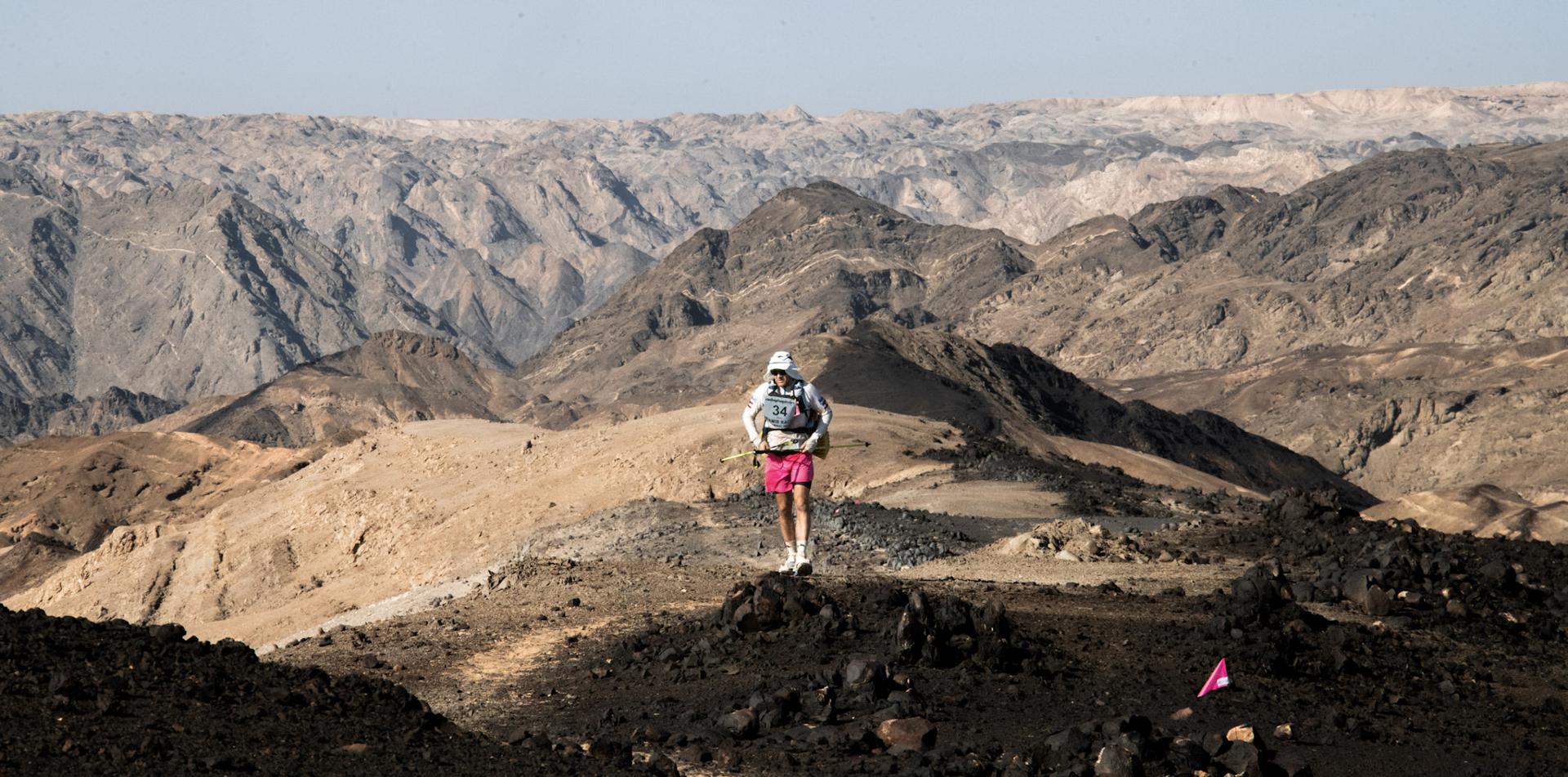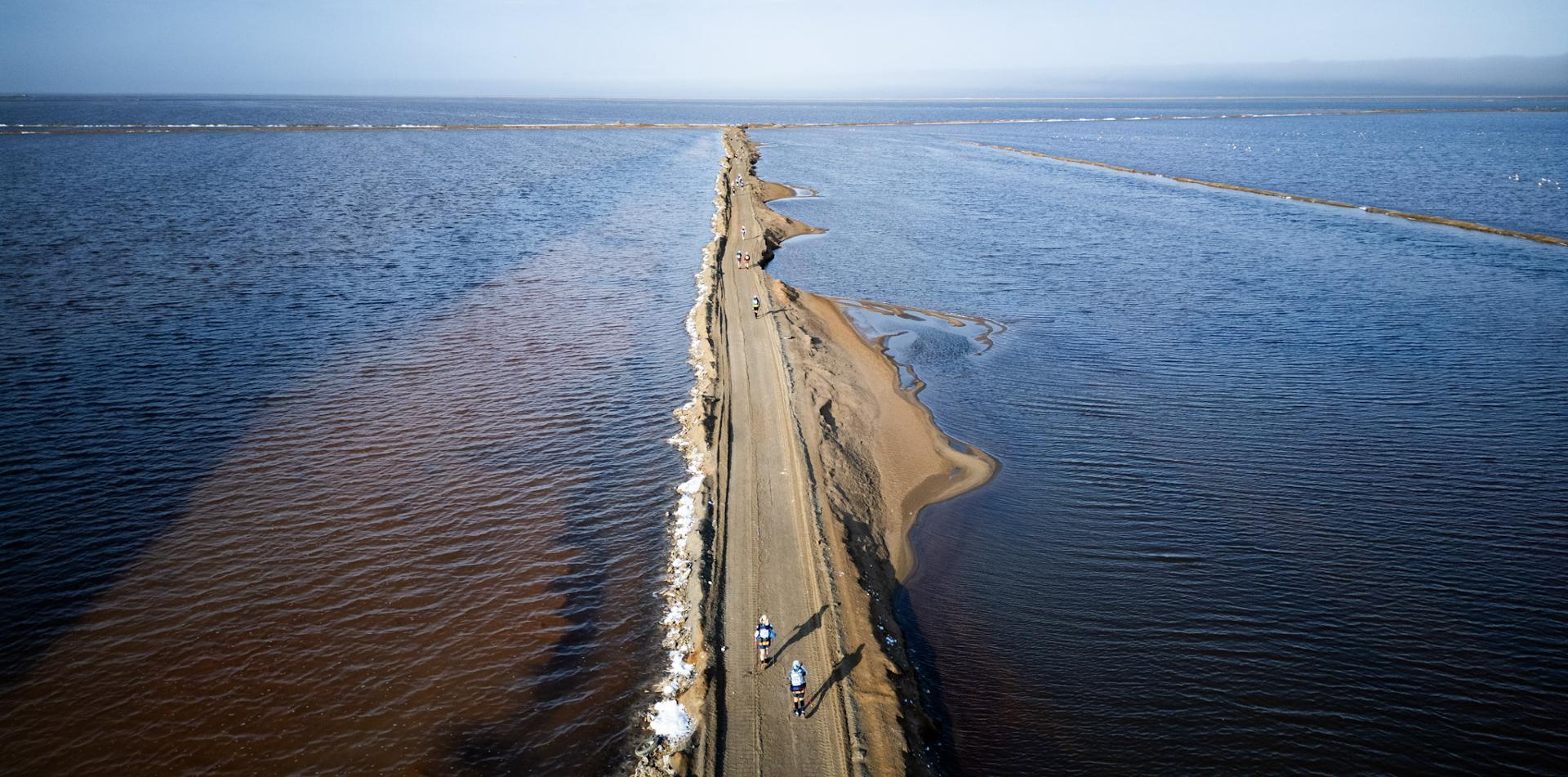RACE INFO

RACE INFO
Namib Race Blogs 2021

03 August 2021 08:55 pm (GMT-08:00) Pacific Time(US & Canada); Tijuana
Footwear

One of the most important decisions that needs to be made is what exactly I am going to be wearing on my feet when I go trotting off into the Atacama Desert. As you can see, I’ve got a few choices lying around in the garage.
(It should be painfully clear to the reader that I am not a sponsored athlete, so while I will be mentioning a few shoe brands here, I won’t be receiving any renumeration, or even free shoes.)
For years I ran in whatever was on sale at the shoe shop (in the days before the internet). Converse. Nike. Tiger (now ASICS). Adidas. Brooks. I ran the way I learned to run, with a long stride and a heel strike. Then for years I was plagued with achilles tendinitis, so I wasn’t able to run much. Then I fancied myself a bicycle racer for a few years, and I didn’t run at all. Bicycle racers don’t run. It’s bad for the legs. When I did start to run again I taught myself to run with a shorter stride and a midfoot strike. I found this was better for my Achilles tendons. With the new technique, I needed a shoe with a little less drop (the amount of height loss in between the heel and the forefoot of a running shoe). I tried the Newton for a time, but I kept getting hung up on the little rocker of tread under the forefoot. I tried a pair of Hokas and found the sole rocker compatible with my new stride, and I have been running the Hoka since. Mostly the Clifton. I like the level of padding in the sole and the shoes seem to fit my feet well.
Unfortunately, the Cliftons are not the longest lasting shoe. The guys at the shop suggest that you change them out every 300 miles. And I have found that in gravel, or more abrasive terrain, they will break down even faster.
The obvious Hoka choice for trails would be the Speedgoat. The Goat is built with a sturdier upper, more supportive lacing and a grippier and durable tread on top of a cushy amount of foam in the midsole. I have run through a few pairs of the Speedgoats and feel comfortable in them on trails. Although I will say they do have a little less room for the toes than some of the other Hokas.
So Speedgoat it is.
Maybe.
You will probably have heard about the carbon fiber plate technology being introduced into running shoes in the last few years. The physics of the plate, I believe, is to absorb some of the energy of the footstrike and then transmit that energy into the pushoff as the shoe leaves the ground. Nike introduced the Vaporfly and promised a 4% boost in times. Naturally I bought into this, as I have mentioned before, I have no moral qualms about buying speed. I will admit to being skeptical. I even told the gal at Footzone that I’d be bringing the shoes back if I only ran 3% faster. In 2019, however, I ran the vaporflys in a half marathon and my time was almost exactly 4% better than my best half marathon time from 2018 in non-carbon shoes. Obviously, there were a lot of variables: it wasn’t on the same course, both halfs were run in duathlons, after a 56+ mile bicycle ride on different courses, I was in different training phases, etc. But, still, at my age, when you are getting faster a year older, that’s a win.
Hoka makes a carbon plate shoe. The Carbon X. And I will say that, even though it was not designed for trails, it is currently my favorite shoe for road or trail. There isn’t much in the way of tread, so the Carbon X is not a good choice for wet, muddy trails, but I don’t see much of those conditions here in the Oregon high desert, and I don’t expect them in Atacama (famous last words?) And I am no physicist, but I suspect that the carbon plate energy transfer doesn’t do you much good in sandy terrain. At my usual pace, I don’t think the carbon plate makes me any faster, but what I do notice is I get better and faster recovery with the carbon technology. So I feel this would be an advantage in a multi-day event.
The Carbon X is also not the most durable shoe. But I have been able to run 400 miles (about twice as many as recommended by the guy at the shoe shop) on them before the carbon plate starts to poke out of the sole.


And, as is to be expected, just about the time I got used to the Carbon X, Hoka decided to improve them. The X2 added some changes to the sole, particularly the heel, and they re-engineered the tongue as well. The new tongue is stiffer with a rubberized backing which, over long distances, seems to cause skin breakdown over my anterior tibialis tendon. So I had to go out on the internet and buy up all the X1s…
Anyway. There it is. I will probably show up in San Pedro with more than one pair of running shoes. I may make a race day call as to which shoe I go with, but I will probably be out on the trail in the Carbon Xs. Or the Speedgoats. If you find me sitting by the side of the trail cursing a blown out sneaker, well, you can say you told me so.







 Newsletter
Newsletter
 Online Store
Online Store
 Login
Login





Comments: Total (0) comments